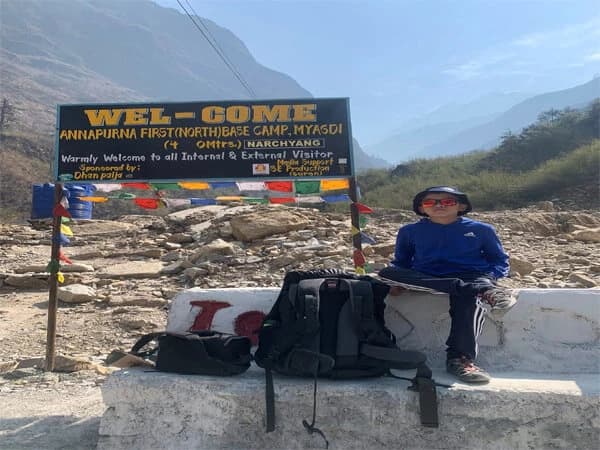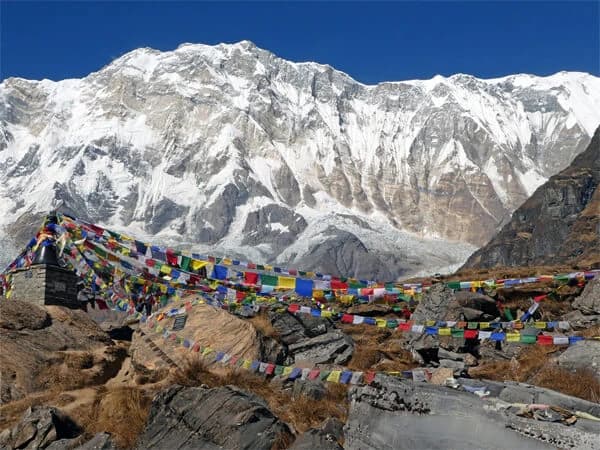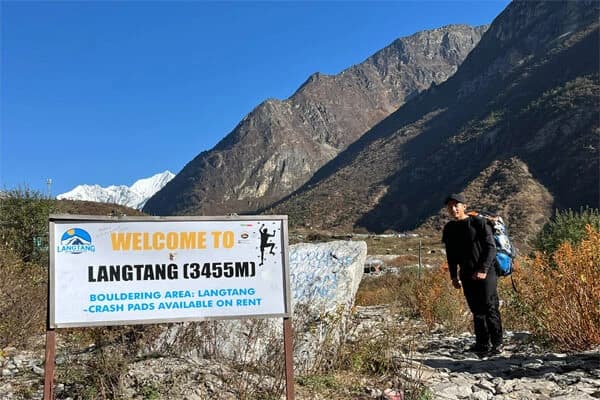Step off the crowded trails and discover something genuinely wild with the North Annapurna Base Camp Trek. Many trekkers use the traditional south route to reach Annapurna Base Camp, but few are aware of the undiscovered beauty that awaits them on the northern side. For those seeking adventure and peace, as well as breathtaking Himalayan Sunrise views away from the crowd, this off-the-beaten-path journey is ideal.
The North Annapurna Base Camp Trek offers you in high-altitude meadows, lush forests, and hidden valleys. You will pass through peaceful towns, cross rivers, and climb in the direction of the glaciers on the rugged northern face of Annapurna. You will get to know the locals, stay in small homes or tents, and eat traditional Nepali food outside while traveling.
More than just a walk, the trek offers an opportunity to witness the Himalayas in their pure, unspoiled nature. It is ideal for people seeking an alternative trekking experience away from the crowded tourist paths. The North Annapurna Base Camp Trek awaits you if you are up for a true adventure and want to find a hidden gem in the Himalayas. Allow the path to take you to a memorable place.
What Makes ABC North Side Trekking Special?
In Nepal's Himalayas, the Annapurna Base Camp North Side Trekking is a little-known yet incredibly wild and serene trekking adventure. The north path to Annapurna Base Camp passes through serene valleys, isolated alpine woods, and high mountain scenery where you rarely meet other trekkers, in contrast to the well-known southern trekking route, which is frequently crowded. The road is natural, the locals have modest lives, and the mountains rise silently all around you. It is like traveling back in time.
Starting in the lower foothills, this north-side trek gradually ascends past places such as Thulobugin and Phurkharka before arriving at the glacier fields under Annapurna I. Small towns, open spaces, and unspoiled landscapes are all that are present here no big hotels or people. Although the journey is more difficult and occasionally calls for camping equipment or assistance from knowledgeable guides, the challenge heightens the sense of genuine adventure. Every step of the journey, which follows the path of nature, offers fresh beauty, from deep gorges and waterfalls to expansive meadows with snow-capped peaks in the distance.
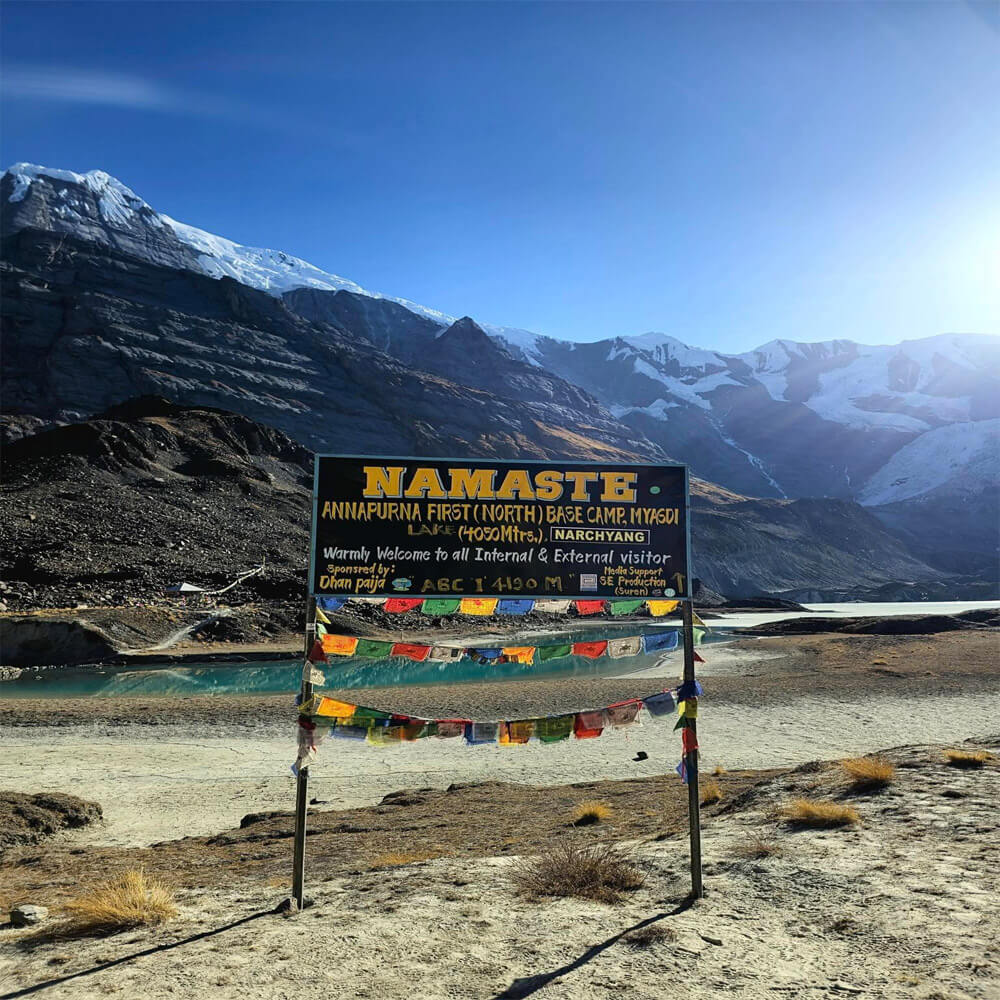
On this northern route, the Annapurna foothills trail is fascinating. You begin in cozy wooded areas with oaks, rhododendrons, and the sound of birds. The landscape shifts to rocky pathways and pine forests as you ascend. In the spring, wildflowers bloom, and in the fall, the bright sky offer a clear glimpse of the mountains. Walking across rivers on wooden bridges, observing yaks grazing in the fields, or enjoying a hot supper with a local family in a peaceful village each day's walk offers a different pace. In addition to their natural beauty, these foothills are home to a rich cultural heritage. Along the route, you might come across Gurung and Magar villages, who have inhabited these hills for many centuries and greet trekkers with smiles and kindness.
The fact that this trail still feels unspoiled is another thing that makes it unique. The North Annapurna Base Camp trail is still unspoiled and simple in contrast to other routes that are crowded with stores, signs, and trekkers. It allows you time to reflect, relax, and establish a genuine connection with the natural world. Walking where few have walked before offers a certain freedom. Slowing down and allowing the journey to unfold is more important than hurrying to a well-known viewpoint.
For those looking for genuine adventure in the Annapurna region, the North Annapurna trekkig route is the best option. It's not only about getting to the base camp; it's also about finding new routes, taking in the scenery, and taking in the tranquil aspects of the Himalayas. For those seeking an authentic, wild and remarkable trekking experience, the Annapurna Base Camp North Route provides just that.
The hidden Annapurna Base Camp North Route provides a wild and less-visited trekking experience in Nepal. The northern trail is still serene and somewhat unexplored, but the majority of trekkers use the more conventional southern route via Ghorepani or Chhomrong. Before arriving to the glacier-filled amphitheater of North Annapurna Base Camp (North ABC), a genuinely breathtaking location encircled by towering peaks, you pass through isolated valleys, serene woods, and high alpine meadows.
This path starts near the popular Annapurna Circuit treks at Sikha or Tatopani. The turn to the north, however, is when everything changes. You feel as though you've entered a foreign universe because there are fewer communities and fewer people. Thulobugin, Phurkharka, and other tiny highland communities that hardly ever see tourists are among the locations the trail travels through. These places are full of natural beauty and provide a tranquil setting ideal for trekkers looking for tranquility and a sense of connection with the natural world.
With its high climbs, river crossings, and perhaps even rocky, unmarked pathways, the trail is not always easy. In some places, you might have to camp because there aren't many or any tea establishments in the higher elevations. However, breathtaking beauty rewards every obstacle encountered on the journey. The trek feels like a moving meditation because of the forest's quiet, the mountain air's purity, and the sound of the rivers rushing below.
Annapurna Base Camp North Route
The mountain views from North ABC are among the most memorable aspects of the North Annapurna Base Camp Trek. The northern side feels unspoiled and untamed, in contrast to the southern base camp, which is encircled by more trekkers and resorts. The enormous north face of Annapurna I (8,091 m) and other magnificent peaks like Fang and Baraha Shikhar are directly in front of you when you stand at North ABC. The vista is almost surreal as the glaciers and snow-covered walls are illuminated in yellow and orange by the early morning sunrise. You may sit quietly and take in the view without any interruptions because it's so calm here.
You'll also catch a view of high cliffs, wild rock formations, other portions of the Annapurna range, and perhaps even wildlife like marmots, Himalayan monals, or blue sheep. In the spring, you may walk through rhododendron forests that are in flower, and in the fall, you can see the pristine skies.
A gateway to Nepal's unspoiled alpine splendor, the Annapurna Base Camp North Route is more than just a route. It offers you the excitement of exploration, the delight of tranquil walking and the opportunity to stand in front of some of the highest peaks in the world, surrounded only by awe and wind. This is the place to go if you want a unique trekking tale away from the big crowd.
Culture and People Along the North Annapurna Sanctuary
In addition to its breathtaking natural beauty, North Annapurna Sanctuary is home to a vibrant local culture and friendly locals who make the path come to life. You will be greeted by people whose way of life has remained simple and closely tied to nature as you pass the valleys and villages of the Annapurna Conservation Area.
The Magar and Gurung ethnic groups make up the majority of the population along the North Annapurna Base Camp Trek route. These villages are renowned for their distinctive rituals, rich traditions, and profound reverence for the mountains and the natural world. These communities exhibit both bravery and simplicity, and many of its males have served in the Indian and British Gurkha forces. You can come across little, sleepy settlements like Narchyang, Thulobugin, and Phurkharka while trekking. The experiences feel more authentic in these locations because they are not as touristy as Ghandruk or Ghorepani. If the time is appropriate, you could even join in on a village celebration, have tea with a local family, or enjoy freshly prepared dal bhat made from vegetables grown in their gardens.
Additionally, the trail passes through Nepal's first and largest protected area, the Annapurna Conservation Area. The preservation of culture, forests and landscapes are equally important in this region. By working directly with local towns, the conservation program promotes sustainable tourism, which means that by trekking ethically, tourists like you support environmental protection, health care, and education.
You will observe that the pace of life here is different. There are no sophisticated eating places or large hotels. The majority of houses have wood and stone construction, smokey kitchens, prayer flags flying outside, and smiles that instantly put you at home. Like you will on the hike, the inhabitants live in close proximity to the earth, cultivating their own food, rearing animals, and trekking great distances each day.
In certain contexts, language may be a barrier, yet compassion, smiles, and gestures are more powerful than words. Since they have been walking the paths since they were young, many of the guides and porters from these settlements are familiar with them. Employing locals not only makes trekking safer and more enjoyable, but it also helps these isolated villages by generating revenue.
A good aspect of the North Annapurna Base Camp Trek is the realization that, although the landscape is remarkable, individuals are the ones that leave the most impression. The impact of their tales, fortitude, and kindness remains beyond the actual journey.
Take your time and connect as you explore the North Annapurna Sanctuary in greater detail. Enjoy a dinner by the fire, pick up a few words in the local tongue, and listen to the sounds of village life. These experiences are what transform a hike into a genuinely fulfilling journey and contribute to the preservation of the Annapurna Conservation Area's environment and culture for coming generations.
Annapurna North Base Camp Difficulty
The Annapurna North Base Camp Trekking is not like a walk in the park. It is a true adventure, tough, exciting, and incredibly fulfilling. Knowing the trail's degree of difficulty, the physical requirements, and how to get ready for this high-altitude trekking Nepal trip are crucial if you're thinking about going on this adventure.
The northern trail is far more isolated and rocky than the traditional south Annapurna Base Camp route. The route doesn’t have crowded teahouses and clearly defined walkways. Rather, you'll encounter steep ascents to glacier-fed valleys, river crossings, slick rocks, and narrow paths through deep forests. As you ascend, the landscape rapidly shifts from gentle forest trails to loose gravel and freezing moraines.
Altitude is one of the trek's biggest obstacles. At about 4,200 meters (13,800 feet), the North Annapurna Base Camp has a lower oxygen content and a higher risk of altitude sickness. Trekking carefully, drinking plenty of water, and taking appropriate acclimatization intervals are therefore crucial. The track is over 3,000 meters in many places, and the higher you ascend, the more the pressure will be on your body.
You must be in good physical shape because this is a high-altitude Nepal trekking route. Although regular hiking, stair climbing, or aerobic conditioning prior to the trip will be beneficial, you do not need to be a professional athlete. When the weather unexpectedly changes or you're exhausted from a long climb and there's still more to go, mental toughness is just as crucial.
The lack of infrastructure is another element that makes things more challenging. There aren't teahouses or stores in many areas. As a result, you frequently have to carry food, tents, and other equipment. Alternatively, you can trek with a local organization like Nepal Trekking Routes, which offers porters, guides, and camping assistance. Sometimes you're camping far from any community, surrounded solely by mountains and stars, and the nights might be chilly.
The weather has an impact as well. The trail may be impacted by landslides, rain, or snowfall, particularly in the early spring or late fall. Risks can be decreased by trekking in the appropriate season, such as March to May or late September to November, but it's always a good idea to be ready for any changes in the mountain environment.
The benefits are amazing in spite of the difficulties. The pure nature, quiet trails, and jaw-dropping mountain views will be yours to enjoy without the crowds. When you eventually get at the base camp, you feel a great sense of success since you have traveled a path that not many people have taken.
For adventurous trekkers seeking something authentic and new, the Annapurna North Base Camp Trek is the ideal choice. This high-altitude trekking Nepal will be one of the most memorable trips of your life if you prepare well, have a trustworthy guide, and have the correct attitude.
A less crowded ABC Trail means a more tranquil, personal, and natural trekking experience as well as a closer bond with the environment. An excellent illustration of this is the North Annapurna Base Camp Trek. The northern trail allows you to walk for hours or even days without encountering another hiker, in contrast to the well-traveled south route where you'll encounter hundreds of hikers every day. However, it's crucial to comprehend the season, difficulty, and permits involved in order to really enjoy this serene, picturesque trek.
Less Crowded ABC Trail: When to Go and What to Expect
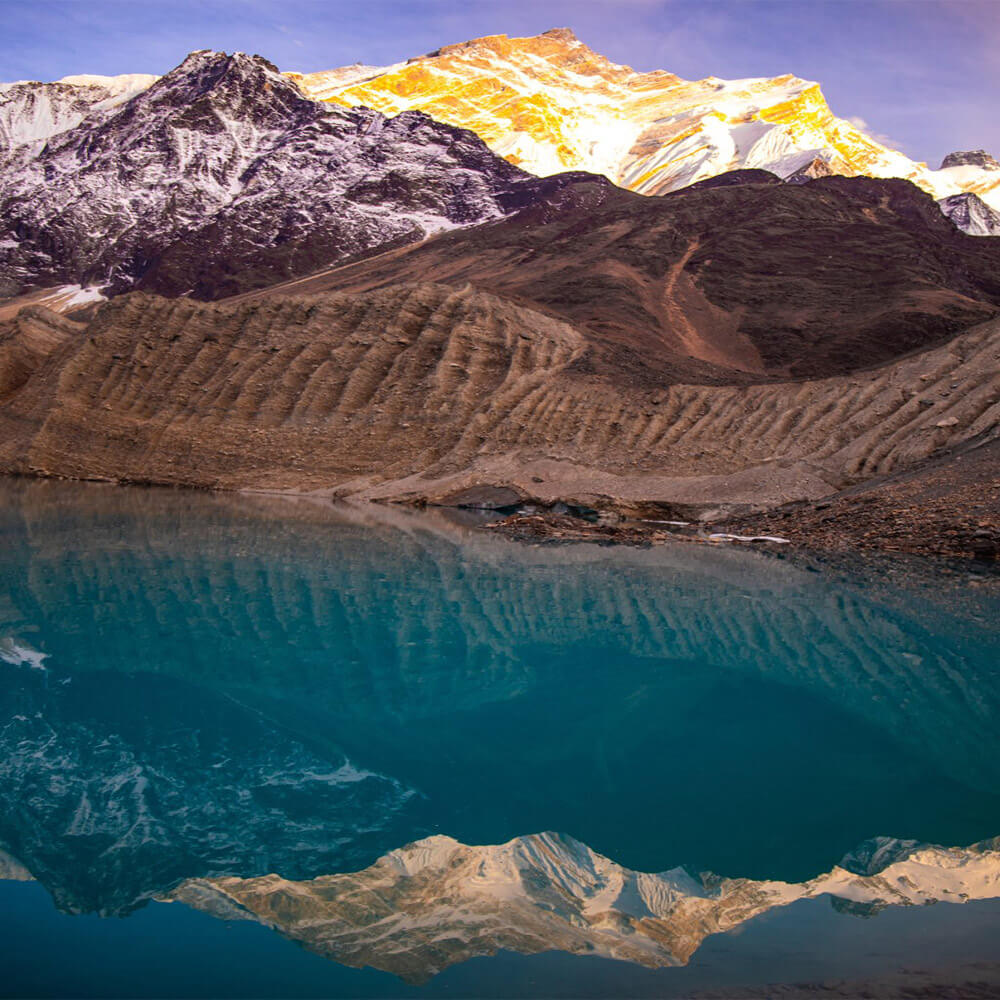
The Annapurna Sanctuary North Approach is most enjoyable in the spring (March to May) and fall (September to November) seasons. Clear skies and breathtaking views of the mountains can be seen in the springtime, along with vibrant rhododendron woods. Autumn is the most popular season for high-altitude trekking in Nepal because it provides the clearest skies of the year, warm temperatures, and dry paths.
Only seasoned trekkers who are ready for snow, chilly temperatures, and fewer amenities can make it through Winter (December to February). Because of the monsoon's slippery roads and intense rain, Summer (June to August) is not the best time of year. In addition to being more difficult to reach, the isolated northern trail may experience landslides, leeches, and poor visibility.
Weather and Trail Conditions by Season
Every season brings with it different weather and trail conditions for the North Annapurna Base Camp Trek, so being prepared will help you stay safe and make better plans.
North Annapurna Base Camp Trekking in Spring Season
One of the greatest seasons for this walk is spring, which runs from March to May. Clear skies and mild days characterize the generally consistent weather. Lower woodlands are home to vibrant rhododendrons in bloom, while higher elevations provide breathtaking views of snow-capped summits. The walking trails are comfortable and dry.
North Annapurna Base Camp Trekking in Autumn Season
Another great time of year is autumn (September to November). The air is clean, the skies are clear, and the views of the mountains are breathtaking after the summer monsoon. The routes are safe and dry, and the daytime and nighttime temperatures are moderate.
North Annapurna Base Camp Trekking in Winter Season
Particularly at high elevations, winter (December to February) brings frigid temperatures and the potential for snowfall. Some parts of the trails may be more difficult to traverse due to ice or snow. Although there are fewer services available, well-prepared explorers can still complete the route.
North Annapurna Base Camp Trekking in Summer Season
The season that is least advised is summer/monsoon (June to August). While cloud cover obscures the mountains, heavy rain makes routes slick and prone to landslides. In the lower woodlands, leeches are also prevalent.
North ABC Trekking Permits
Compared to the popular routes, Himalayan Hiking North ABC requires a little more planning and preparation. The logistics of this trail are crucial because it is less developed, wilder, and more distant. Don't worry, though; after everything is set up, you'll be ready for an amazing trip across Nepal's unspoiled countryside. First things first, you need to set up a few crucial permits.
Annapurna North Base Camp Trek Permits
The Annapurna Conservation Area Permit (ACAP) is the first. All hikers entering the Annapurna region must do this in order to support local communities and conservation efforts. The second is the Trekkers' Information Management System (TIMS) card, which is intended to monitor hikers' safety while they are on the trail. It is simple to obtain both permits from the Nepal Tourism Board office in Kathmandu or Pokhara, or from a our trekking company.
It is strongly recommended and in some places, mandatory to hire a local guide because the North Annapurna Base Camp trek is off-the-beaten-path. Unlike the main Annapurna Circuit, the trail is poorly defined, and there are places where there is no mobile coverage. A guide can give you directions, set up campsites or homestays, and offer local information that makes the trip more interesting. Porters are also useful, particularly if you're transporting warm clothes, camping equipment, and adequate food for the farther-flung areas.
North Side Annapurna Experience: DIY or Guided Trek?
One significant choice for the North Side Annapurna Experience is whether to take a guided tour or do it yourself. Depending on your degree of fitness, trekking expertise, and comfort level with distant travel, each option has advantages and disadvantages.
DIY may seem interesting if you're an experienced trekker with good navigational abilities and familiarity with the terrain of the Himalayas. But compared to well-traveled routes, the North ABC route is less well-maintained and signed. There aren't many teahouses, there aren't many maps, and there are places without cell service. Additionally, traditional villages along North ABC will be traversed, where few people understand English. Finding the correct routes, setting up meals, and interacting with people might be challenging without a guide.
Peace of mind is provided by a guided trek, particularly when done with a local organization like Nepal Trekking Routes. In addition to sharing anecdotes about the area and its inhabitants, your guide is familiar with the trail and can set up campsites or house stays. In isolated settlements, you'll also support local employment and take in a more diverse cultural experience.
The safest and most fulfilling option for most trekkers to experience this off-the-beaten-path trip is with a guided tour, particularly when traversing the stunning traditional villages along North ABC.
Offbeat ABC Trekking Accommodation and Food
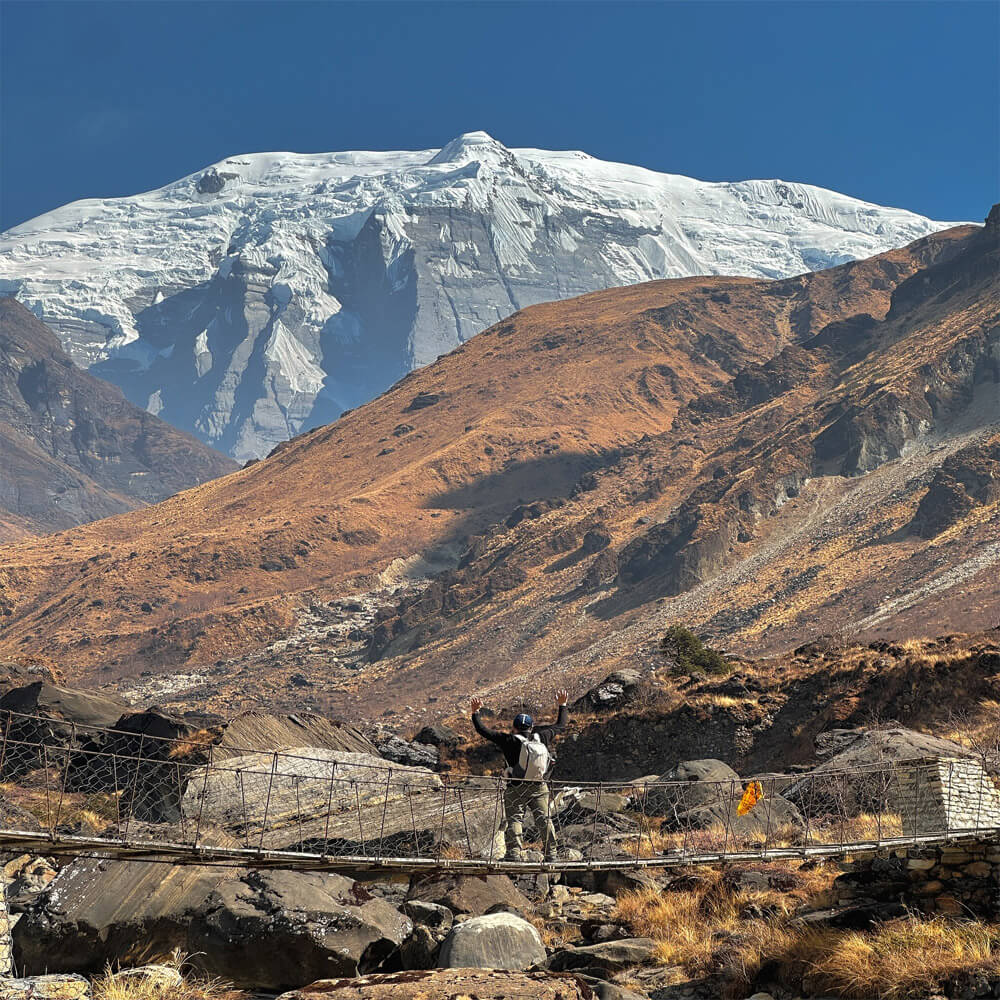
Even in terms of lodging and dining options, the North Annapurna Base Camp Trek feels offbeat and underdeveloped, which is one of its distinctive features. This offbeat ABC Trekking provides a more simple and rustic experience than the traditional Annapurna trails, which are lined with reputable lodges. However, it is just what many trekkers seek: a close relationship with the natural world and local culture, away from modern distractions.
You might come across tiny tea houses and accommodations maintained by local families on the lower portions of the trail, which are often the first few days. They are relatively simple tea establishments. Typically, rooms are simple timber buildings with twin beds, a communal bathroom, and perhaps no running water. These are comfortable locations to unwind and enjoy a hot meal after a long day, so don't expect luxury.
Tea houses become few or non existent as you ascend farther into the forest. After a while, you'll probably be camping, particularly at North Annapurna Base Camp. Tents, sleeping bags, mats, and kitchenware are typically included in trekking packages. Along the way, the trekking crew which includes cooks, porters, and guides will pitch their tents in appropriate locations. Sleeping beneath the stars, waking up to the sound of rivers, and being encircled by snow-capped peaks while there are no other trekkers in the area make this section of the journey an unforgettable experience.
Tea Houses and Accommodations: What to Expect
Simple yet satisfying lunches are served in tea shops and campgrounds. Dal Bhat, a typical Nepali cuisine consisting of rice, lentil soup, and seasonal vegetables, is the most popular dish. It provides you with the energy you need for long hiking days and is warm and healthful.
Noodles, momos (dumplings), pasta, Tibetan bread, and dishes made with potatoes are among the other foods. Your trekking team will cook hot meals using products that are found locally when you are camping. In order to combat the cold, hot soups are popular at higher elevations, while tea and coffee are served at the majority of stations. Having some energy bars, almonds, and snacks on hand is a smart idea, particularly for the higher sections when there are less food options.
Food on the Trail: Fuel for the Journey
The route, size of the group, and services offered all affect the "hiking duration and cost" of the North Annapurna Base Camp Trek. Depending on the starting location and respite days, most treks endure 10–14 days. A slower pace is frequently required because the terrain is rougher and slower than the main Annapurna trails.
Due to its isolated location, this trek is regarded as mid- to high-range in terms of cost. The logistics get more costly because some areas need camping. For a complete package, budget between $1,200 and $2,000 per person. Typically, this covers transportation, meals, tea house and camping accommodations, permits, porters, and guides.
Hiking Duration and Cost: What to Plan For
Nepal Trekking with a reputable local organization, such as Nepal Trekking Routes, guarantees your safety, offers top-notch equipment, and has knowledgeable staff who are familiar with the terrain. Additionally, the price promotes responsible travel and local communities.
Ultimately, the North Annapurna Base Camp Trek's allure is enhanced by the simple tea houses, camp meals, and the work required to get there. Experience, the outdoors, and genuine adventure are more important than luxury.
Alternate Annapurna Base Camp Route
The North Annapurna Base Camp Trek and lesser-known routes like Mardi Himal, Khopra Danda, or Mohare Danda are excellent alternatives to the traditional trail if you're searching for a more tranquil way to go to the breathtaking Annapurna Base Camp. Without the crowds of the main path, these routes lead you through peaceful forests, historic villages, and towering hills with breathtaking vistas.
Using guide and porter services is one of the greatest ways to experience these alternative treks. A local guide keeps you on course, imparts cultural and natural knowledge, and makes sure you're safe. To allow you to hike freely and take in the view, a porter handles your bulky bag.
Trekking with a guide and porter is not only beneficial but also strongly advised because these routes are more isolated and occasionally poorly signposted. Having a reliable local staff makes your expedition seamless and unforgettable, regardless of whether you decide to do the North ABC trail or other undiscovered routes in the Annapurna region. You'll be able to support local communities, feel closer to the land, and enjoy the path more.
Some of Frequently Asked Question
What distinguishes the standard ABC trek from North Annapurna Base Camp?
In contrast to the well-known Annapurna Base Camp journey, North Annapurna Base Camp is a more isolated and less-traveled path. It leads you through untamed terrain, undiscovered valleys, and peaceful paths with less hikers. Get away from the tourist crowds and enjoy a more tranquil and natural experience.
Does the North ABC Trek require a guide?
Indeed, a guide is highly advised,and in certain cases, necessary. Due to the trail's remoteness and lack of signage, hiring a certified guide facilitates communication with locals, safety, and navigation. For a seamless and secure journey, many hikers pick a local business like Nepal Trekking Routes.
How do I get to Nepal for the trek?
You must fly into Nepal's capital, Kathmandu, at Tribhuvan International Airport. This is where the majority of foreign hikers begin their journey.
How do I get from Kathmandu to the starting point of the North Annapurna Base Camp Trek?
Typically, you take a tourist bus (6–8 hours) or a plane (25 minutes) from Kathmandu to Pokhara. From Pokhara, you can go to Sikha or Tatopani, the starting points of the trek, by private jeep or local bus.
Can I get a visa on arrival in Nepal?
Yes, you may get a tourist visa at the airport in Kathmandu. The majority of visitors are eligible for a 15-day, 30-day, or 90-day visa.
What documents do I need for the Nepal visa?
Bring a passport-sized photo, money for the visa in USD or another major currency, and a valid passport with at least six months remaining.
How much does the visa cost?
- Nepal Visa Fee for 15 days: $30 USD
- Nepal Visa Fee for 30 days: $50 USD
- Nepal Visa Fee for 90 days: $125 USD
Can I apply for a Nepal visa online before I arrive?
Yes, you can use the official Nepal Immigration website to complete the pre-arrival form, which is an online visa application. To expedite the procedure, bring the printed confirmation.
Do I need a special trekking visa?
No, a standard tourist visa is sufficient. Trekking permits are also required for trekking, and your trekking company can set these up for you.
Who arranges the airport pickup?
Our company, Nepal Trekking Routes will pick you up at the airport and take care of your hotel transfers and local transportation if you make your reservation with us.
Conclusion: North ABC Trek
More than just a trek, the North Annapurna Base Camp Trek is a serene adventure into the heart of the Himalayas. You may sleep under the stars close to snow-capped peaks, cross rivers, and stroll through peaceful forests far from the crowded routes. You eat freshly prepared cuisine, interact with friendly locals, and experience a sense of connection to the natural world. You gain strength, patience, and an appreciation for life's small pleasures from this trek. Trekkers who enjoy adventure and seek out something unique and authentic will find it ideal. This undiscovered Himalayan treasure is the perfect option if you want to have an experience that puts you in close proximity to the natural world and the traditional way of life. You'll have the serenity in your heart when you return, not just pictures.





